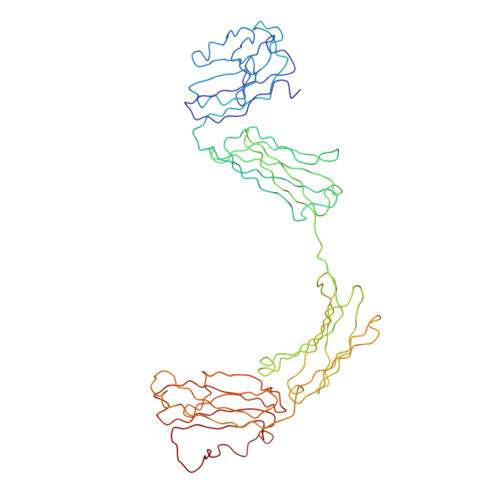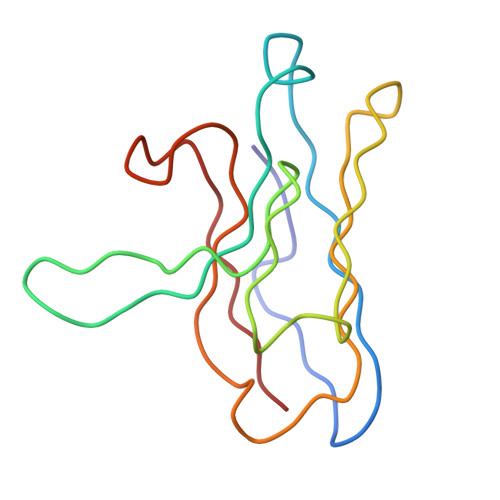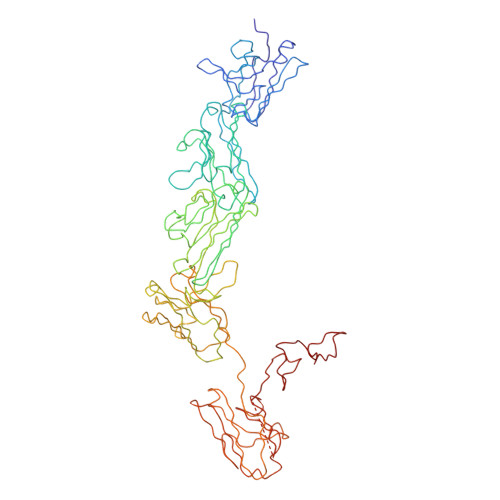The nonplanar secretory IgA2 and near planar secretory IgA1 solution structures rationalize their different mucosal immune responses.
Bonner, A., Almogren, A., Furtado, P.B., Kerr, M.A., Perkins, S.J.(2009) J Biological Chem 284: 5077-5087
- PubMed: 19109255
- DOI: https://doi.org/10.1074/jbc.M807529200
- Primary Citation of Related Structures:
3CM9 - PubMed Abstract:
Secretory IgA (SIgA) is the most prevalent human antibody and is central to mucosal immunity. It exists as two subclasses, SIgA1 and SIgA2, where SIgA2 has a shorter hinge joining the Fab and Fc regions. Both forms of SIgA are predominantly dimeric and contain an additional protein called the secretory component (SC) that is attached during the secretory process and is believed to protect SIgA in harsh mucosal conditions. Here we locate the five SC domains relative to dimeric IgA2 within SIgA2 using constrained scattering modeling. The x-ray and sedimentation parameters showed that SIgA2 has an extended solution structure. The constrained modeling of SIgA2 was initiated using two IgA2 monomers that were positioned according to our best fit solution structure for dimeric IgA1. SC was best located along the convex edge of the Fc-Fc region. The best fit models showed that SIgA2 is significantly nonplanar in its structure, in distinction to our previous near planar SIgA1 structure. Both the shorter IgA2 hinges and the presence of SC appear to displace the four Fab regions out of the Fc plane in SIgA2. This may explain the noncovalent binding of SC in some SIgA2 molecules. This nonplanar structure is predicted to result in specific immune properties for SIgA2 and SIgA1. It may explain differences observed between the SIgA1 and SIgA2 subclasses in terms of their interactions with antigens, susceptibility to proteases, effects on receptors, and distribution in different tissues. The different structures account for the prevalence of both forms in mucosal secretions.
- Institute of Structural and Molecular Biology, Division of Biosciences, Darwin Building, University College London, Gower Street, London WC1E 6BT, United Kingdom.
Organizational Affiliation:



















